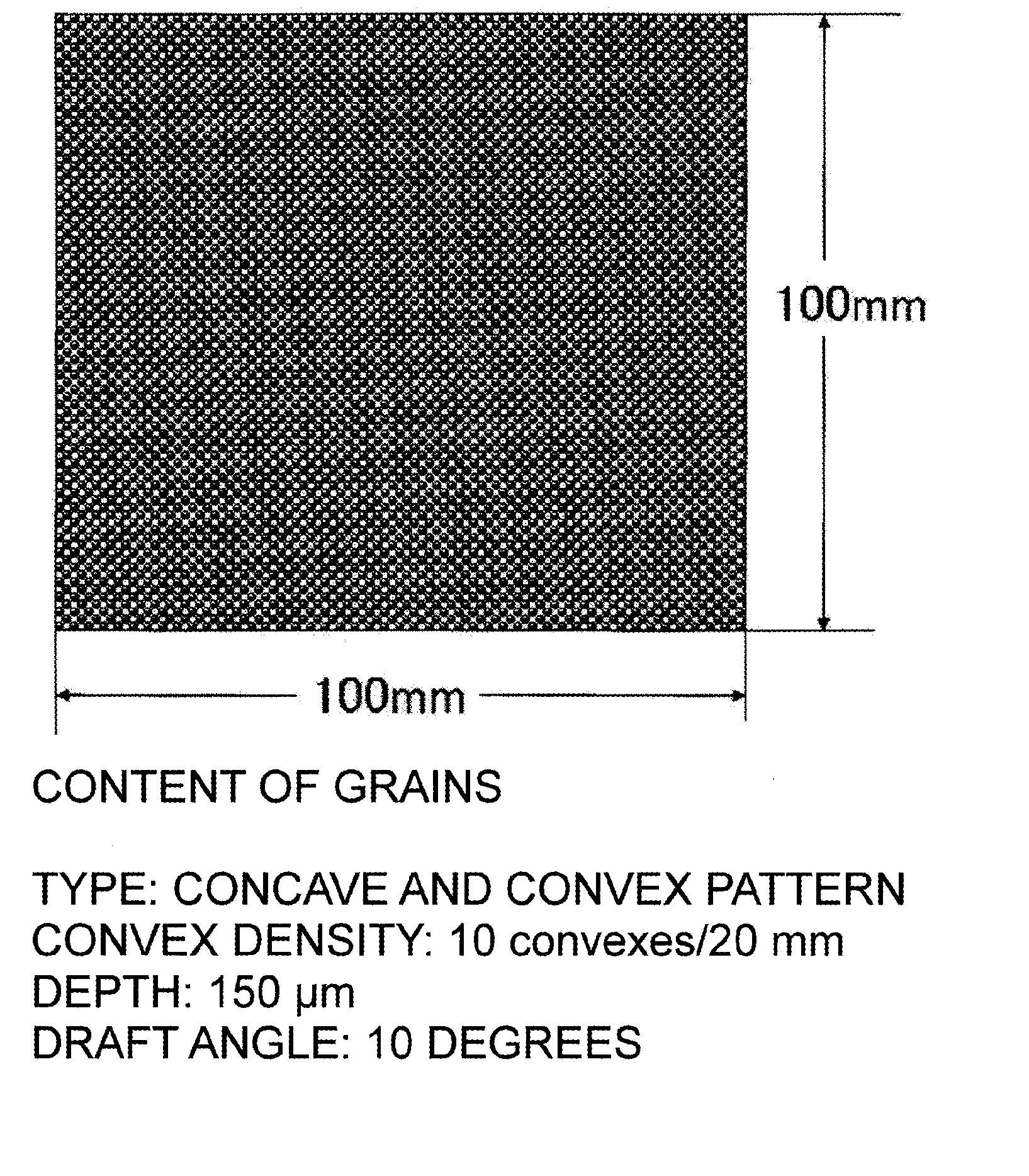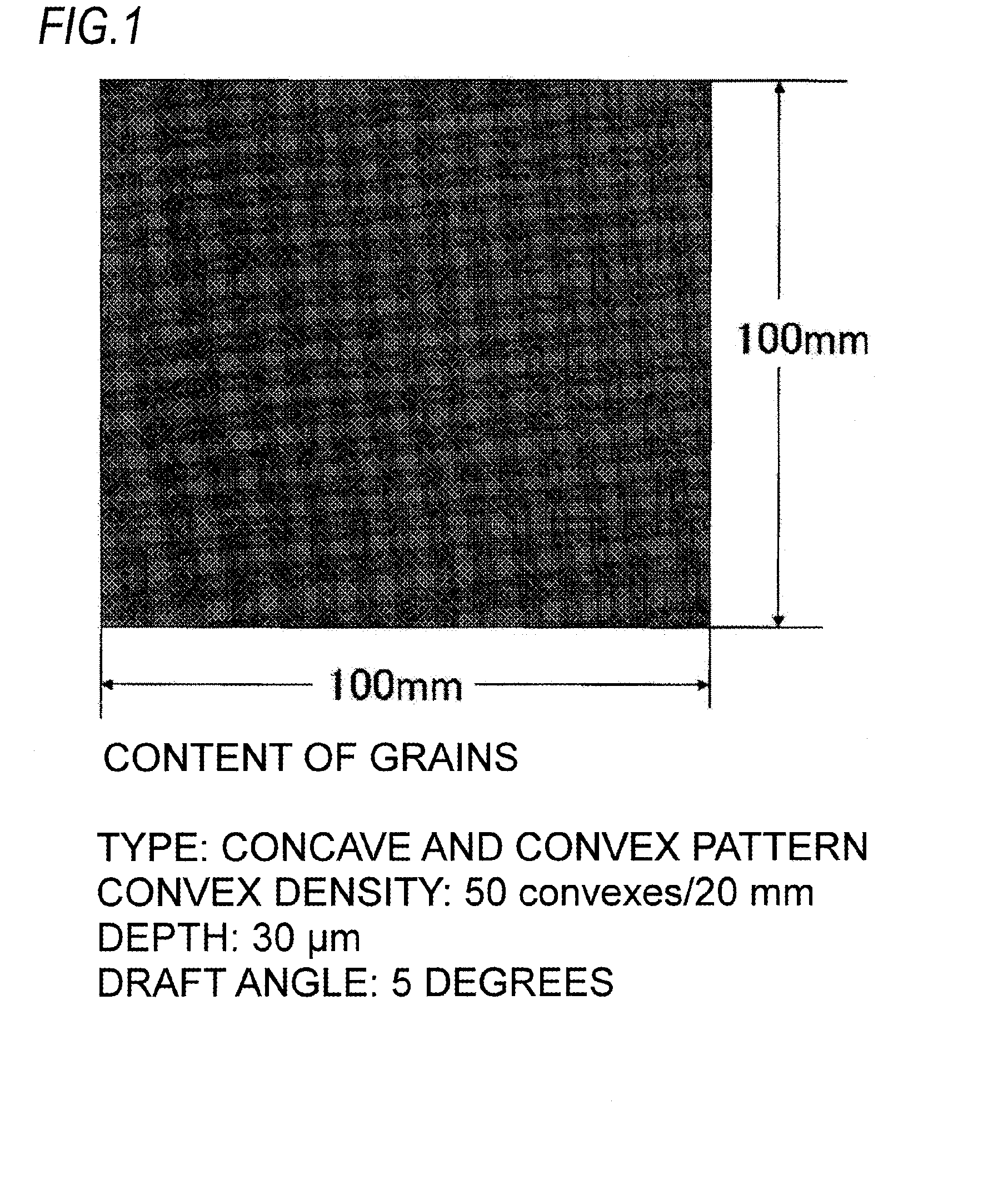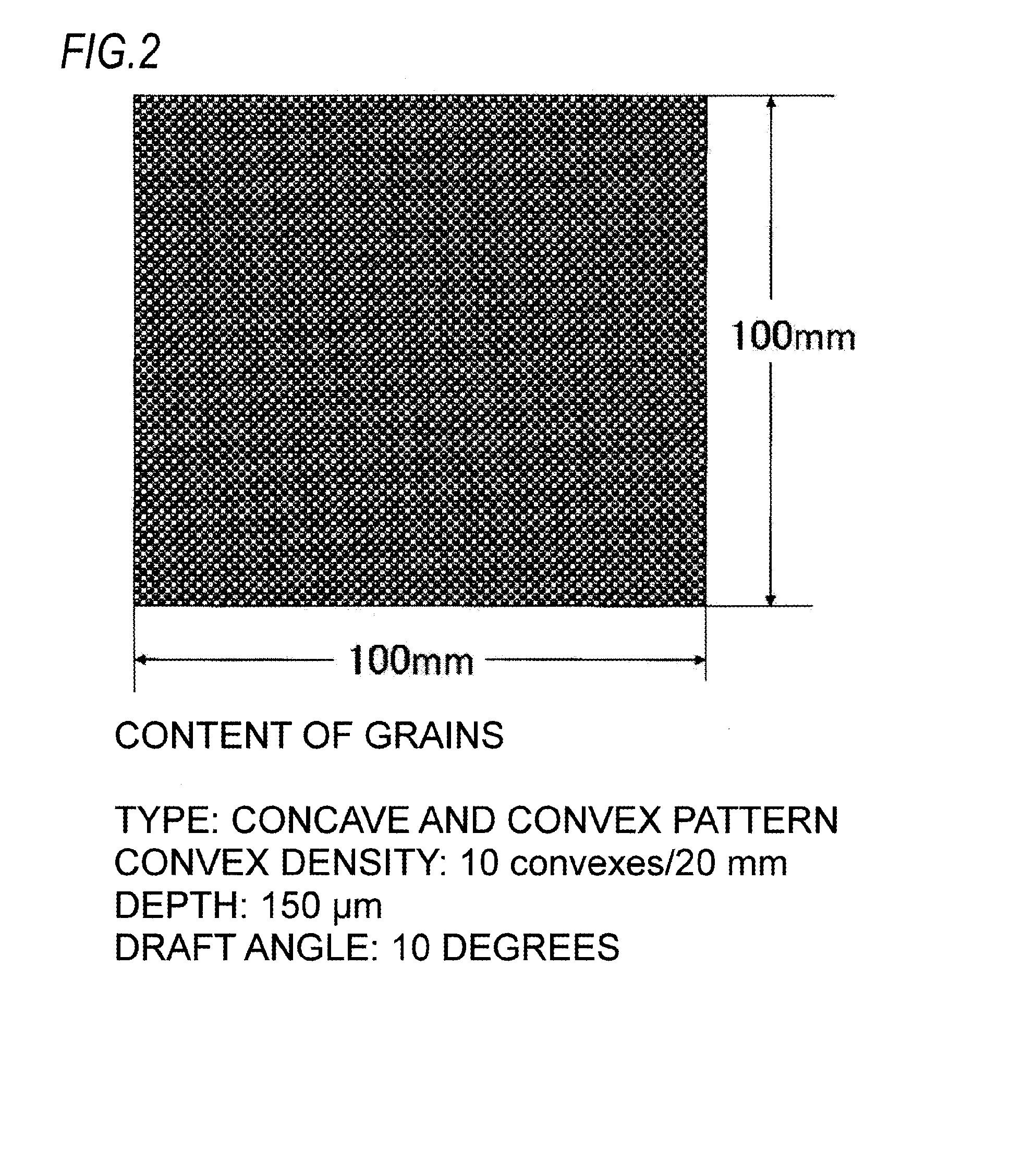Shaped Product Made of Fiber-Reinforced Composite Material and Having Excellent Surface Appearance
a composite material and fiber reinforcement technology, applied in the field of shaped products, can solve the problems of low corrosion resistance, difficult mold mold, and poor appearance of the member, and achieve the effect of excellent surface appearance, lightening weight and surface appearan
- Summary
- Abstract
- Description
- Claims
- Application Information
AI Technical Summary
Benefits of technology
Problems solved by technology
Method used
Image
Examples
reference example 1
[0179]Carbon fibers (Tenax (registered trade mark) STS40-24KS (average fiber diameter: 7 μm, strand width: 10 mm) manufactured by Toho Tenax Co., Ltd.) were used as reinforcing fibers. The carbon fibers were cut to a length of 10 mm while being widened in a width of 20 mm, and introduced into a taper tube at a supply rate of the carbon fibers of 301 g / min, and while air was blown to the carbon fibers in the taper tube to partially open the fiber bundle, the carbon fibers were sprayed onto a table provided under an outlet of the taper tube.
[0180]In addition, a PA 66 fiber (a polyamide 66 fiber manufactured by Asahi Kasei Fibers Corporation: T5 nylon, fineness: 1400 dtex), which was dry-cut to a length of 2 mm, was supplied as a matrix resin into the taper tube at a rate of 430 g / min, and sprayed together with the carbon fibers. Accordingly, a random mat in which the carbon fibers having an average fiber length of 10 mm and the PA 66 were mixed was obtained. In the random mat, a volum...
reference example 2
[0182]Carbon fibers (Tenax (registered trade mark) IMS60-12K (average fiber diameter: 5 μm, strand width: 6 mm) manufactured by Toho Tenax Co., Ltd.) were used as reinforcing fibers. The carbon fibers were cut to a length of 20 mm, and introduced into a taper tube at a supply rate of the carbon fibers of 1222 g / min, and while air was blown to the carbon fibers in the taper tube to partially open the fiber bundle, the carbon fibers were sprayed onto a table provided under an outlet of the taper tube.
[0183]In addition, a PP resin (polypropylene manufactured by Prime Polymer Co., Ltd: Prime Polypro J108M), which was obtained by freeze-pulverizing into an average particle diameter of about 1 mm, was supplied as a matrix resin into the taper tube at a supply rate of 2527 g / min, and sprayed together with the carbon fibers. Accordingly, a random mat in which the carbon fibers having an average fiber length of 20 mm and the PP were mixed was obtained. In the random mat, a volume fraction ra...
reference example 3
[0185]Glass fibers (EX-2500 (average fiber diameter: 15 μm, strand width: 9 mm) manufactured by Nippon Electric Glass Co., Ltd.) were used as reinforcing fibers. The glass fibers were cut to a length of 50 mm, and introduced into a taper tube at a supply rate of the glass fibers of 412 g / min, and while air was blown to the glass fibers in the taper tube to partially open the fiber bundle, the glass fibers were sprayed onto a table provided under an outlet of the taper tube.
[0186]In addition, a PC resin (a polycarbonate resin manufactured by Teijinkasei Co., Ltd: Panlite (registered trade mark) L-1225L), which was obtained by freeze-pulverizing into an average particle diameter of about 710 μm, was supplied as a matrix resin into the taper tube at a supply rate of 791 g / min, and sprayed together with the glass fibers. Accordingly, a random mat in which the glass fibers having an average fiber length of 50 mm and the PC were mixed was obtained. In the random mat, a volume fraction rat...
PUM
| Property | Measurement | Unit |
|---|---|---|
| length | aaaaa | aaaaa |
| length | aaaaa | aaaaa |
| volume fraction | aaaaa | aaaaa |
Abstract
Description
Claims
Application Information
 Login to View More
Login to View More - R&D
- Intellectual Property
- Life Sciences
- Materials
- Tech Scout
- Unparalleled Data Quality
- Higher Quality Content
- 60% Fewer Hallucinations
Browse by: Latest US Patents, China's latest patents, Technical Efficacy Thesaurus, Application Domain, Technology Topic, Popular Technical Reports.
© 2025 PatSnap. All rights reserved.Legal|Privacy policy|Modern Slavery Act Transparency Statement|Sitemap|About US| Contact US: help@patsnap.com



